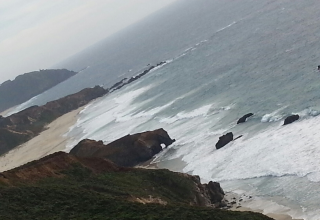
About a billion years ago animal life and plant life separated from their eukarya single cell ancestor. From here we will follow the evolutionary line of animals, although these principles can be applied to plants as well. What distinguished animals from plants was the ability for self powered movement. In the beginning, this movement was almost certainly as random as floating had been. But powered movement created more contact with nutrients, so the energy tradeoff worked.
At some point around 800 million years ago, animals acquired the ability to direct their movement. As a general rule animals can not move in more than one direction at once. Directed movement required some centralized function that mediated “up vs. down” and “left vs. right.” We will call the cells or protein structures that performed this earliest central choice-making function the Choice-making Core (CMC). This was the very beginning of what would eventually become the “self.” No other theory has such an elegant explanation of the origin of self.
From this point choices for animals became progressively more complex as animals evolved to fill available food niches. Animal choice-making progressed through two major thresholds in choice-making complexity.
The first threshold was reached when animals began to search for and find food. The Search and Find (SF) food acquisition strategy required complex behavioral choices with too many variables for choice sequences to be fully pre-programmed. Search-and-Find strategies superseded earlier EN strategies where food could be obtained without directed movement. There is evidence from an article published in Cell magazine (2010) that this occurred in pre-bilateral times at least 600 million years ago.
Following the SF food acquisition threshold, a second and more powerful threshold was reached when the food chain included predatory animals pursuing and capturing prey animals with the capacity to flee. We will call this food acquisition strategy Pursue and Capture (PC). The choice-making demands of pursuit are iterative and interactive and involve even greater complexity than SF strategies. At these two thresholds, low variable automated choice-making would have reached the limits of its adaptive advantage in helping organisms obtain food. Rule-based or open-ended choice-making emerged to meet the demands of these more complex food acquisition strategies.
Download Article











